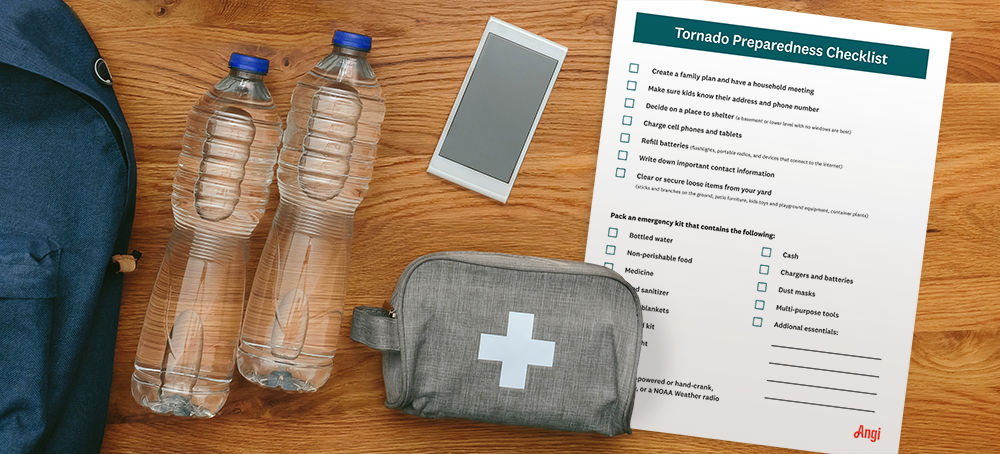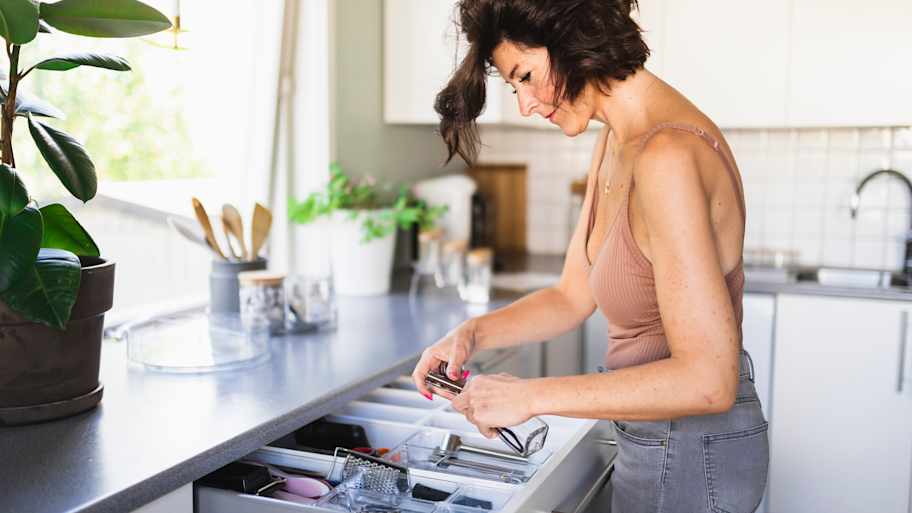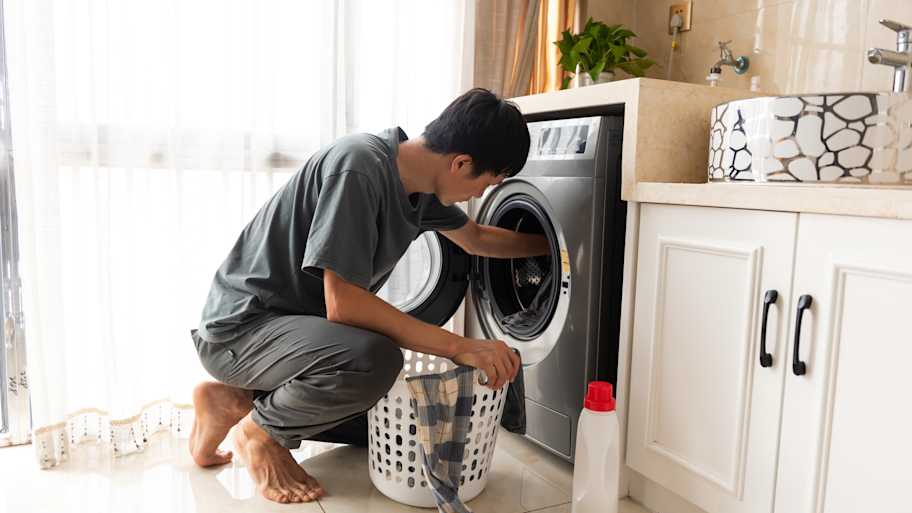
Discover the average professional organizer cost, what influences pricing, and how to budget for your next home organization project.
You can keep the whole family safe before, during, and after a dangerous tornado with tips from our tornado safety checklist


Tornadoes can be dangerous, but there are steps you can take to prepare your family and home in case of a natural disaster. From creating an escape plan to stocking batteries, an emergency kit will help you feel prepared for anything. This tornado safety checklist will help you keep everyone safe and sound.
The first step on your tornado safety checklist is to talk to your family. Sit down with everyone and talk about tornadoes and the plan you’ve created—not only will this be valuable information, but it will make the actual event less scary.
Make sure your kids know their address and phone number in case they get separated. Go over our checklist with them and encourage them to ask questions.
Get the entire family involved so everyone is on the same page—the worst-case scenario is having a horde of panicked folks bumping into each other during a serious emergency. Identify a space to shelter (basements and lower levels without windows are safe places to be in a tornado).
Once everyone feels comfortable with the emergency escape plan, continue prepping by doing the following:
A safe room is a fortified room designed to stand up to strong winds and other natural disasters.
Work with a general contractor in your area to build a safe room well before an actual tornado or severe weather event occurs
Pack an emergency kit with:
Bottled water
Non-perishable food
Medicine
Hand sanitizer
Space blankets
First aid kit
Flashlight
Other essentials you feel will come in handy
It’s easy to overlook debris, but removing it before a tornado or severe storm can help minimize damage.
Pick up sticks and fallen tree limbs
Bring container plants and patio furniture inside
Secure bulky items, like your kids’ swingset, to the ground with rope, chains, and bungee cords
Keep in mind that cell phones may not work if towers blow over when a tornado hits. If that happens, you can still communicate with battery-powered devices. Make sure batteries are fully charged and refill them if needed.
Refill batteries in flashlights, portable radios, and any battery-powered devices that can connect to the internet
Keep tablets and smartphones fully charged before a severe weather event
Jot down contact information in a list
Include phone numbers for everyone in your family as well as close friends who can lend a hand if you need help
This is especially important if stormy weather is in the forecast. While you’re sipping your coffee in the morning, turn on the news to check on any warnings. A tornado watch issued by the National Weather Service means you should be on the lookout for a tornado, while a tornado warning means you should spring into action and seek shelter.
Look outside and check for these signs of a possible impending tornado:
Dark skies
Low-lying storm clouds
Hail
Intense thunder

Download Tornado Preparedness Checklist Here
Try to stay calm if a tornado touches down near you. Use this tornado safety checklist to stay safe and ride out the storm.
If you have a basement, gather the family and pets and head down there. If you don’t have a basement, head downstairs to your lowest floor and shelter in a room without windows (flying debris could break them). In a pinch, hide in a closet or interior hallway. Just make sure everyone can fit, and don’t forget the dog!
Hide in the basement or lower level
Shelter in a room without windows
Use an interior closet or hallway if needed
Use your internet-enabled device to hear the latest emergency news. If it sounds like it will be a long wait until it's safe again, break out that emergency kit to keep everyone comfortable.
Listen to an NOAA weather radio station
Check the National Weather Service website

The last step on your checklist is to know what to do after the tornado or storm has passed. Once the storm has cleared, stay vigilant. It may still be dangerous to head outside, so protect yourself and your family by staying put and waiting for authorities to confirm that it’s safe.
Wait for authorities to confirm the tornado has passed. It may be tempting to assess the damage, but wait until authorities say it’s safe.
Listen to the news for important updates.
Check everyone around you for injuries.
Seek medical treatment (safely) if needed.
Keep an eye out for hazards. Watch out for downed power lines and broken gas lines, which can pose serious safety risks. Report damages to the utility company.
Wear protective clothes when cleaning up your home and understand how to properly handle hazardous chemicals in case you encounter any spills or leaks.
From average costs to expert advice, get all the answers you need to get your job done.

Discover the average professional organizer cost, what influences pricing, and how to budget for your next home organization project.

Declutter and maximize your space with these eight smart storage tips for messy closets, cupboards, and drawers around your home.

If your home is a bit messy, that’s perfectly normal. Trusting a professional home organizer to revamp your space can be worth the cost. Here’s how to find and hire a professional organizer.

Discover small closet organization tips to maximize space, reduce clutter, and create a stylish, functional storage area that suits your needs.

Maximize space and reduce clutter with these smart laundry room organization tips that boost function and even your home’s resale appeal.

These kitchen drawer organization tips will reduce time spent rifling through the kitchen looking for what you need. Learn how to organize your kitchen.